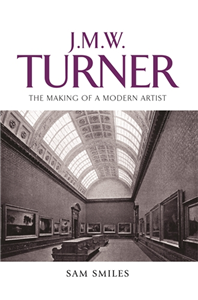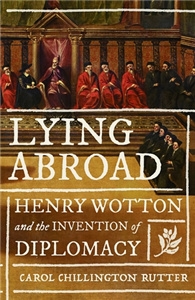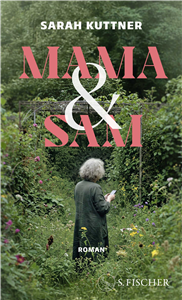Your Search Results
-
Smith-Obolensky Media
Smith-Obolensky Media is an international media boutique featuring the work by award-winning author Ivan Obolensky. His gothic mystery, Eye of the Moon, sold over ten thousand copies and the sequel is well underway for release next year. The Latin American Spanish literary translation has been accepted into the Librería Nacional chain, the largest in Colombia, for a thousand paperbacks to be sold in their stores (including those in three international airports). We are magicmakers. How many of us have changed from a simple line we once read, or a film we saw at a crossroads moment? The art of storytelling, in all its facets, is something we celebrate. In this spirit, we accept projects on a limited basis and focus on one author at a time, so we can fully present their works.
View Rights Portal
-
Promoted ContentThe ArtsDecember 2007
J. M. W. Turner
The making of a modern artist
by Sam Smiles, Alan Rutter
Alone of his contemporaries, J.M.W. Turner is commonly held to have prefigured modern painting, as signalled in the existence of The Turner Prize for contemporary art. Our celebration of his achievement is very different to what Victorian critics made of his art. This book shows how Turner was reinvented to become the artist we recognise today. On Turner's death in 1851 he was already known as an adventurous, even baffling, painter. But when the Court of Chancery decreed that the contents of his studio should be given to the nation, another side of his art was revealed that effected a wholescale change in his reputation. This book acts as a guide to the reactions of art writers and curators from the 1850s to the 1960s as they attempted to come to terms with his work. It documents how Turner was interpreted and how his work was displayed in Britain, in Europe and in North America, concentrating on the ways in which his artistic identity was manipulated by art writers, by curators at the Tate and by designers of exhibitions for the British Council and other bodies. ;
-
Promoted ContentOctober 2018
Von Männern und ihren Katzen
Die größten Katzenliebhaber der Geschichte
by Sam Kalda, Kirsten Riesselmann
Der beste Freund des Mannes ist der Hund. Von wegen! In seinem stilsicher wie liebevoll illustrierten Buch widmet sich Sam Kalda den großen »Katzenmännern« der Geschichte und beweist, dass den bedeutendsten Denkern, Erfindern, Künstlern und Schriftstellern unserer Zeit keineswegs imposante Vierbeiner beiseite standen, sondern filigrane Katzengeschöpfe. Hemingway, der für seinen Jagdinstinkt – in tierischen wie in libidinösen Gefilden – und seinen exzessiven Alkoholkonsum berüchtigt war, legte eine erstaunliche Zuneigung zu Katzen an den Tag, zärtlich nannte er sie seine »Schnurr-Fabriken«. Nikola Tesla wurde angeblich zum Nachdenken über Elektrizität inspiriert, als er seine Katze Macak streichelte und einen Schlag abbekam. Und als fanatischster Katzenliebhaber wird vermutlich Karl Lagerfeld in die Geschichte eingehen, dessen weißes Siamkätzchen Choupette nicht nur für Chanel modelt, sondern auch einen Twitter-Account, zwei Nannys und eigenes Designergeschirr besitzt. Von Männern und ihren Katzen ist eine längst überfällige und charmante Hommage an die größten Katzenliebhaber aller Zeiten.
-
 Trusted Partner
April 2025
Trusted Partner
April 2025Double Serpent
Theatertreffen 2025 – das Buch zum Stück
by Sam Max, Wilke Weermann
Sam Max schreibt ein albtraumhaftes Theaterstück, bei dem ein scheinbar harmloses Spiel zur Metapher eines Menschenlebens wird. Max seziert präzise eine Paar- und Vater-Sohn-Beziehung und stellt die Frage nach dem gesellschaftlichen Umgang mit Körpern von Gay Men und ihren Wunden in den Mittelpunkt – und thematisiert so den Zusammenhang von Macht, Erbe und Gewalt. Bei Connor scheint es gut zu laufen: Er führt eine Beziehung mit dem erfolgreichen Filmproduzenten Felix und hat gerade den ersten Job als Innenarchitekt an Land gezogen. Doch dann holen ihn die Schatten der Vergangenheit ein. Ausgelöst durch einen medialen Shitstorm, in dem sich Felix wiederfindet, wird Connor in die Erinnerungen seiner Kindheit zurückgeworfen. Er ist bei Fake Dad aufgewachsen, muss mit ihm regelmäßig zum Safe House fahren. Dort spielt Connor im Keller mit seinem unsichtbaren Freund Double Serpent . Ein Computerspiel, bei dem zwei Schlangen in einer Box gefangen sind und möglichst viel fressen müssen, um immer länger zu werden – nur berühren dürfen sie sich nicht. Sonst: Game Over. Eines Tages entdeckt Connor, was Fake Dad währenddessen so treibt, und findet sich in einem ominösen Zwischenraum wieder, in dem Realitäts- und Erinnerungsebenen verschwimmen und plötzlich Felix‘ Körper aufgeschnitten auf einem OP-Tisch liegt …
-
 Trusted Partner
Trusted Partner
-
 Trusted Partner
Lifestyle, Sport & LeisureJune 2024
Trusted Partner
Lifestyle, Sport & LeisureJune 2024Round our way
Sam Hanna's visual legacy
by Heather Nicholson
Sam Hanna (1903-96), a pioneering filmmaker from Burnley, Lancashire, was dubbed the 'Lowry of filmmaking' by BBC broadcaster Brian Redhead in the 1980s. The well-meant label stuck, even though it misses the variety of Hanna's remarkable output. Hanna's intimate glimpses into the lives of strangers enable us to imagine the possible stories that lie behind the images. Away from mid-century exponents of documentary filmmaking and photography, Hanna shows us humanity and a microcosm of a world in change, where his subjects are caught up in issues far beyond their grasp that we, as onlookers years later, encounter and see afresh. Written and curated by historian Heather Norris Nicholson, Round our way combines stills, essays and archive photography to document Hanna's unique visual record on film, particularly in northern England, but also further afield, during decades of profound change.
-
 Trusted Partner
Trusted Partner
-
 Trusted Partner
Trusted Partner
-
 Trusted Partner
Trusted Partner
-
 Trusted Partner
Trusted Partner
-
 Trusted Partner
Biography & True StoriesFebruary 2026
Trusted Partner
Biography & True StoriesFebruary 2026Lying abroad
Henry Wotton and the invention of diplomacy
by Carol Chillington Rutter
Student, traveller, secretary, scoundrel, spy: introducing the maverick whose diplomacy saved Europe from war. Henry Wotton had already exhausted several lives when he arrived in Venice as England's ambassador in 1604. Yet the most remarkable phase of his career was yet to come. In Lying abroad, Carol Chillington Rutter tells Wotton's extraordinary story. She reveals how this one-time exile, who fled England after his employer was convicted of treason, gained the favour of King James, securing a knighthood and a diplomatic posting. Charged with restoring relations with Venice after a fifty-year hiatus, he drew criticism for his breaches of protocol. But when a dispute brought Europe to the brink of war, Wotton took a risk - one that changed European history. This engrossing biography recounts a life that was tumultuous, tarnished and endlessly theatrical. The man King James called his 'honest dissembler' was a maverick who fashioned diplomacy in ways that still inform international relations today.
-
 Trusted Partner
Trusted Partner
-
 Trusted Partner
Literature & Literary StudiesJuly 2023
Trusted Partner
Literature & Literary StudiesJuly 2023In the company of wolves
Werewolves, wolves and wild children
by Sam George, Bill Hughes
In the company of wolves presents further research from the Open Graves, Open Minds Project. It connects together innovative research from a variety of perspectives on the cultural significance of wolves, wild children and werewolves as portrayed in different media and genres. We begin with the wolf itself as it has been interpreted as a cultural symbol and how it figures in contemporary debates about wilderness and nature. Alongside this, we consider eighteenth-century debates about wild children - often thought to have been raised by wolves and other animals - and their role in key questions about the origins of language and society. The collection continues with essays on werewolves and other shapeshifters as depicted in folk tales, literature, film and TV, concluding with the transition from animal to human in contemporary art, poetry and fashion.
-
 Trusted Partner
Trusted Partner
-
 Trusted Partner
Trusted Partner
-
 Trusted Partner
Trusted Partner
-
 Trusted Partner
Trusted Partner
-
 Trusted Partner
Trusted Partner
-
 Trusted Partner
Trusted Partner
-
 Trusted Partner
Literature & Literary StudiesJune 2019
Trusted Partner
Literature & Literary StudiesJune 2019Titus Andronicus
by Jim Bulman, Michael Friedman, Carol Chillington Rutter, Alan Dessen
Michael D. Friedman's second edition of this stage history of Shakespeare's Titus Andronicus adds an examination of twelve major theatrical productions and one film that appeared in the years 1989-2009. Friedman identifies four lines of descent in the recent performance history of the play: the stylised, realistic, darkly comic, and political approaches, which culminate in Julie Taymor's harrowing film Titus (1999). Aspects of Taymor's eclectic vision of ancient Rome under the grip of modern fascism were copied by several subsequent productions, making Titus the most characteristic, as well as the most influential, contemporary performance of the play. Friedman's work extends Alan Dessen's original study to include Taymor's film, along with chapters devoted to the efforts of international directors including Gregory Doran, Silviu Purcarete, and Yukio Ninagawa.
-
 Trusted Partner
Trusted Partner




























